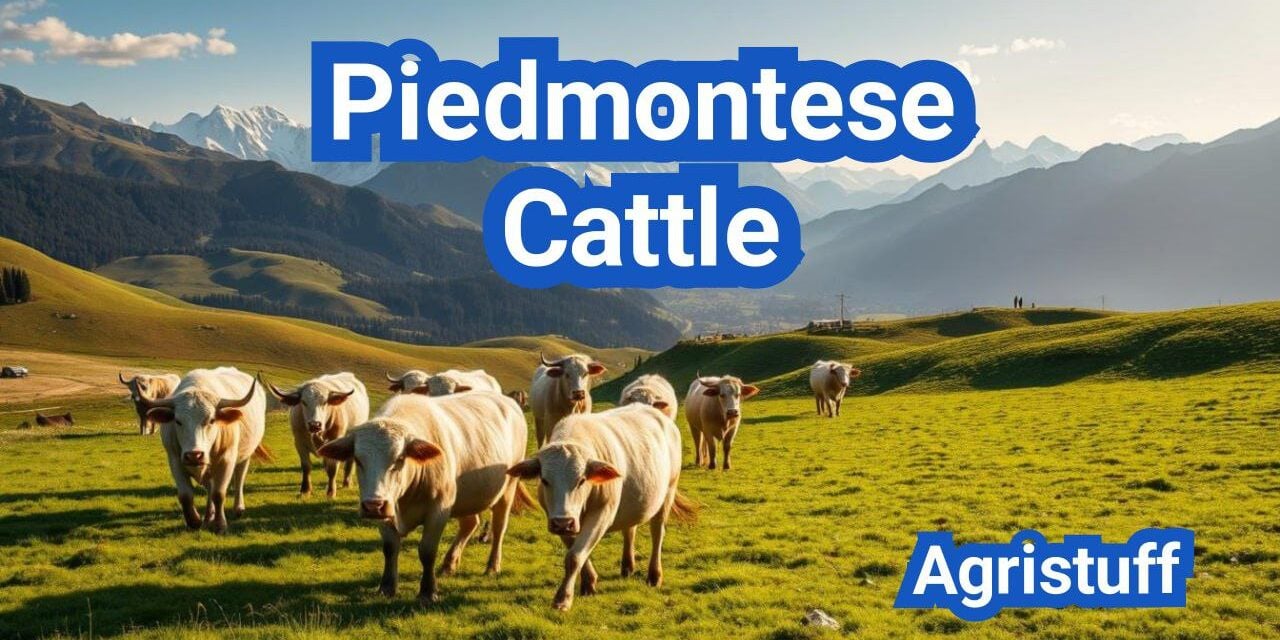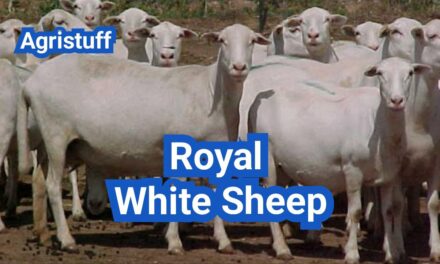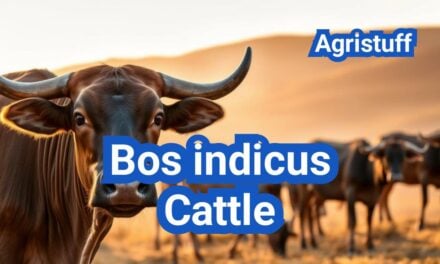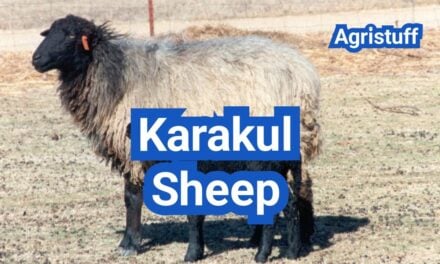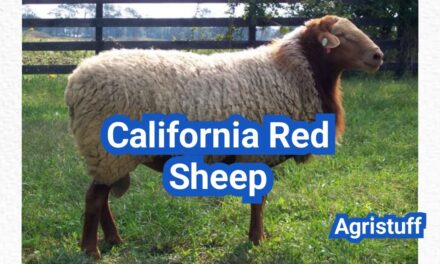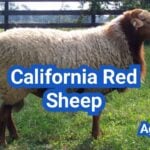The Piedmontese breed has a rich history that dates back to the Piedmont region of northwest Italy. Known for their exceptional muscular development, these cattle have garnered significant attention worldwide.
Originating in Italy, this breed is renowned for its unique double-muscling characteristic, which sets it apart from other cattle breeds. This trait not only influences their physical appearance but also impacts their breeding and uses in agriculture.
This article will delve into the history, characteristics, breeding practices, and various uses of Piedmontese cattle, providing a comprehensive overview of this remarkable breed.
Key Takeaways
- Origin of Piedmontese cattle in northwest Italy
- Unique double-muscling characteristic and its implications
- Overview of the breed’s characteristics and breeding practices
- Various uses of Piedmontese cattle in agriculture
- Significance of the breed in the agricultural industry
The Origin and History of Piedmontese Cattle
Originating in the northwestern part of Italy, the Piedmontese cattle breed has a storied past that is closely tied to the region’s agricultural heritage. The breed’s history is a testament to the careful selection and breeding practices of local farmers over centuries.
Italian Roots in the Piedmont Region
The Piedmontese cattle have their roots in the Piedmont region, where they were developed from ancient European cattle breeds. The region’s unique geography and climate played a significant role in shaping the breed’s characteristics. Historical records indicate that the breed was influenced by Zebu cattle, which contributed to its hardiness and adaptability.
As noted by agricultural historians, “The introduction of Zebu genetics into European cattle breeds marked a significant turning point in the development of robust and resilient cattle populations.” This influence is evident in the Piedmontese breed’s ability to thrive in various environments.
Historical Development of the Breed
The historical development of Piedmontese cattle is a story of selective breeding aimed at enhancing their muscular development and overall hardiness. Over time, breeders focused on creating a cattle breed that was not only robust but also possessed the desirable trait of double-muscling.
| Period | Significant Events in Breed Development |
|---|---|
| Early 19th Century | Initial selection for muscular traits |
| Late 19th Century | Influence of Zebu cattle introduced |
| 20th Century | Global exportation begins |
Global Spread of Piedmontese Cattle
Piedmontese cattle have been introduced to various countries around the world, including the United States, where they have been integrated into local cattle breeding programs. Their global spread is a testament to the breed’s versatility and the quality of beef they produce.
The global distribution of Piedmontese cattle has been facilitated by their adaptability and the demand for high-quality beef. As one breeder noted, “The Piedmontese breed brings a unique combination of tenderness and flavor to the beef market, making it highly sought after by consumers and producers alike.”
Understanding Piedmontese Cattle Characteristics

Piedmontese cattle are renowned for their distinct characteristics, which set them apart from other breeds. Their unique attributes make them a valuable choice for farmers and consumers looking for high-quality beef.
Physical Appearance and Size
Piedmontese cattle are known for their muscular build, a result of a natural genetic mutation that leads to muscular hypertrophy. This condition, also known as double-muscling, gives them a distinctive appearance with well-developed muscles, particularly in the hindquarters.
Typically, Piedmontese cattle have a compact, athletic build with a short head, broad muzzle, and a muscular neck. They usually stand between 48 and 50 inches tall at the withers, with males being larger than females. Their coat color is typically white or wheaten (a light tan to grayish color), with some variation allowed in breed standards.
Temperament and Behavior
Piedmontese cattle are generally known for their docile nature, making them easier to handle compared to some other breeds. Their calm temperament is an advantage for farmers, as it reduces stress during handling and improves overall farm safety.
The breed’s behavior is also influenced by their muscular hypertrophy. While they are not typically aggressive, their size and strength mean they should be treated with respect and handled carefully. Proper handling from an early age can help ensure they remain docile and manageable.
Adaptability to Different Environments
One of the key advantages of Piedmontese cattle is their adaptability to various environments. Originating from the Piedmont region in Italy, they have been bred to thrive in different conditions. Their hardiness and ability to adapt make them suitable for farming in diverse geographical locations.
Piedmontese cattle can perform well in both grass-fed and grain-finished production systems. Their ability to adapt to different feeding practices and environments contributes to their growing popularity among farmers worldwide.
The Myostatin Gene: The Science Behind Double-Muscling
The myostatin gene plays a crucial role in the double-muscling trait observed in Piedmontese cattle. This genetic factor is responsible for the exceptional muscular development characteristic of the breed.
What is the Myostatin Gene?
Myostatin, also known as growth differentiation factor 8 (GDF8), is a protein that in humans is encoded by the MSTN gene. It is a member of the transforming growth factor-beta (TGF-β) superfamily and acts as a negative regulator of muscle growth. Mutations or alterations in the myostatin gene can lead to reduced or eliminated myostatin activity, resulting in increased muscle mass.
How Double-Muscling Occurs in Piedmontese Cattle
In Piedmontese cattle, double-muscling occurs due to a specific mutation in the myostatin gene. This mutation leads to the production of a defective myostatin protein, which fails to effectively regulate muscle growth. As a result, Piedmontese cattle exhibit hypertrophic muscle development, characterized by increased muscle fiber size and number.
The genetic basis of double-muscling in Piedmontese cattle has been identified as a point mutation in the MSTN gene, resulting in a non-functional myostatin protein. This mutation is inherited in an autosomal recessive pattern, meaning that an animal must inherit two copies of the mutated gene (one from each parent) to express the double-muscling trait.
Comparison with Other Double-Muscled Breeds
While Piedmontese cattle are known for their double-muscling trait, other breeds also exhibit similar characteristics due to myostatin gene mutations. A comparison of Piedmontese with other double-muscled breeds is presented in the following table:
| Breed | Myostatin Gene Status | Muscle Characteristics |
|---|---|---|
| Piedmontese | Point mutation, inactive protein | Hypertrophic muscle development |
| Belgian Blue | Various mutations, non-functional | Extreme muscular hypertrophy |
| Charolais | Some lines carry myostatin mutations | Moderate muscular development |
Understanding the genetic basis of double-muscling in Piedmontese cattle and comparing it with other breeds provides valuable insights into the genetic factors influencing muscle development in cattle. This knowledge can be applied in breeding programs to enhance desirable traits in beef cattle.
Piedmontese Cattle Breed Standards

Understanding the breed standards for Piedmontese cattle is essential for breeders and enthusiasts alike. These standards are the benchmarks against which the breed’s quality and characteristics are measured.
Official Breed Classification
The official classification of Piedmontese cattle involves a detailed assessment of their physical characteristics, genetic makeup, and breeding history. This classification is crucial for registration purposes and for maintaining the breed’s integrity.
Key factors in official breed classification include:
- Coat color and texture
- Muscle conformation and overall physique
- Absence of genetic defects or undesirable traits
Desirable Traits in Breeding Stock
When selecting breeding stock, several desirable traits are considered to ensure the continuation of the breed’s superior characteristics. These traits not only enhance the breed’s quality but also contribute to its overall health and productivity.
| Trait | Description |
|---|---|
| Muscling | Double-muscling characteristic, a hallmark of the Piedmontese breed |
| Fertility | High reproductive efficiency in both males and females |
| Growth Rate | Rapid growth rate, contributing to efficient beef production |
Disqualifying Characteristics
Certain characteristics can disqualify Piedmontese cattle from registration or breeding programs. These include genetic defects, poor muscling, and non-standard coat colors.
Common disqualifying characteristics are:
- Presence of genetic disorders
- Poor muscle conformation
- Non-standard coat colors or patterns
By adhering to these breed standards, breeders can ensure that Piedmontese cattle continue to thrive and maintain their reputation for excellence in the agricultural community.
Raising Piedmontese Cattle: A Comprehensive Guide
Raising Piedmontese cattle requires careful consideration of their unique needs. These cattle are known for their double-muscling trait, which demands specific care to ensure their health and productivity.
Optimal Housing and Pasture Requirements
Piedmontese cattle need adequate housing and pasture to thrive. The housing should protect them from extreme weather conditions and provide enough space for movement.
- Provide shelter with adequate ventilation
- Ensure enough space for cattle to move comfortably
- Maintain clean living conditions
Pasture management is also crucial. Piedmontese cattle are known to be good grazers, and rotational grazing can help maintain pasture health and productivity.
Nutritional Needs and Feeding Practices
Nutrition plays a vital role in the development of Piedmontese cattle. Their diet should be rich in nutrients to support their growth and muscle development.
| Nutrient | Requirement |
|---|---|
| Protein | High-quality protein sources |
| Energy | Adequate energy for growth |
| Minerals | Essential minerals like calcium and phosphorus |
Health Management for Double-Muscled Cattle
Health management is critical for Piedmontese cattle due to their double-muscling trait. Regular veterinary check-ups and preventive care are essential.
- Monitor for signs of illness or stress
- Implement vaccination programs
- Maintain a clean and healthy environment
By following these guidelines, farmers can ensure the health and productivity of their Piedmontese cattle, making their farming operations successful.
Breeding Practices for Piedmontese Cattle

The breeding of Piedmontese cattle involves several key considerations to ensure the health and quality of the animals. Effective breeding practices are essential for maintaining the breed’s characteristics and achieving desired outcomes in cattle farming.
Selection of Breeding Stock
Selecting the right breeding stock is crucial in Piedmontese cattle breeding. Farmers should focus on animals with desirable traits such as muscularity, fertility, and overall health. The selection process involves evaluating the genetic makeup of potential breeding animals to ensure they carry the myostatin gene responsible for double-muscling, a hallmark of the Piedmontese breed.
Key factors in selecting breeding stock include:
- Genetic testing for the myostatin gene
- Physical evaluation of muscular development
- Assessment of reproductive health
- Pedigree analysis to avoid inbreeding
Artificial Insemination vs. Natural Breeding
Piedmontese cattle breeders have the option of using artificial insemination (AI) or natural breeding methods. AI offers several advantages, including access to superior genetics from renowned sires, reduced risk of disease transmission, and the ability to breed animals that are geographically distant.
| Breeding Method | Advantages | Disadvantages |
|---|---|---|
| Artificial Insemination | Access to superior genetics, reduced disease risk | Requires technical expertise, higher initial cost |
| Natural Breeding | Lower initial cost, natural selection | Limited genetic diversity, higher disease risk |
Despite the benefits of AI, natural breeding is still a viable option for many farmers, especially those with smaller operations or those who prefer a more traditional approach.
Calving Considerations for Double-Muscled Breeds
Calving in Piedmontese cattle requires careful management due to the breed’s double-muscled characteristic. This trait can lead to complications during birth, such as dystocia, where the calf is too large to pass through the birth canal easily.
Strategies to mitigate calving difficulties include:
- Monitoring heifers and cows closely during pregnancy
- Planning breeding seasons to avoid calving during extreme weather conditions
- Having veterinary assistance on standby for complicated births
By understanding and implementing these breeding practices, farmers can improve the overall health and productivity of their Piedmontese cattle herds.
Piedmontese Crossbreeding Programs

The use of Piedmontese sires in crossbreeding programs is recognized for producing high-quality beef offspring. This practice has gained popularity among beef producers looking to enhance the genetic makeup of their herds.
Popular Crossbreeding Combinations
Piedmontese cattle are often crossed with other breeds to leverage their superior muscling and tenderness. Popular combinations include crossing Piedmontese sires with Angus or Simmental dams, resulting in offspring that inherit the desirable traits of both parents.
These crossbreeding programs not only improve the quality of beef but also contribute to the overall efficiency of beef production. The hybrid vigor resulting from crossbreeding can lead to improved growth rates and fertility in the offspring.
Beef-on-Dairy with Piedmontese Sires
One of the emerging trends in the beef industry is the use of Piedmontese sires in beef-on-dairy programs. By crossing Piedmontese bulls with dairy breeds, producers can generate calves that are better suited for beef production, thus improving the overall profitability of dairy operations.
The Piedmontese breed’s genetic traits, such as double-muscling, are particularly valuable in these programs. The resulting crossbred calves exhibit enhanced growth characteristics and meat quality, making them highly sought after in the beef market.
Expected Outcomes and Hybrid Vigor
The primary goal of Piedmontese crossbreeding programs is to capitalize on hybrid vigor, which refers to the improved biological fitness of the offspring compared to the parent breeds. This phenomenon is particularly pronounced when Piedmontese cattle are crossed with other breeds, resulting in offspring with superior growth rates, improved fertility, and enhanced meat quality.
By leveraging the genetic strengths of Piedmontese cattle, producers can achieve significant improvements in their beef production operations. The combination of Piedmontese genetics with other breeds offers a powerful strategy for enhancing the quality and profitability of beef production.
Piedmontese Cattle in the United States
The introduction of Piedmontese cattle to the United States marked a significant milestone in the country’s cattle breeding history. This breed, known for its exceptional muscular development and lean meat production, was first imported to the U.S. in the early 1980s.
History of Importation to America
The importation of Piedmontese cattle to America was a result of the growing interest in the breed’s unique genetic traits, particularly its double-muscling characteristic. This trait is associated with increased muscle mass and reduced fat content, making Piedmontese beef highly desirable. The first Piedmontese cattle were brought to the U.S. by breeders looking to enhance their cattle herds with these superior genetics.
The early imports were crucial in establishing a foundation for the breed in the U.S. Breeders worked diligently to breed these cattle, ensuring that the desirable traits were preserved and enhanced. The North American Piedmontese Association (NAPA) played a vital role in this process by maintaining breed standards and promoting the breed.
Current Population and Distribution
Today, Piedmontese cattle are found across the United States, with a significant presence in various cattle-producing regions. The breed has gained popularity due to its exceptional beef quality and the efficiency of production. According to the NAPA, there has been a steady increase in the number of registered Piedmontese cattle over the years, indicating a growing interest in the breed.
The distribution of Piedmontese cattle is widespread, with breeders from different states participating in breeding programs. This widespread distribution is a testament to the breed’s adaptability and the efforts of breeders to promote it.
The North American Piedmontese Association (NAPA)
NAPA is the primary organization in the U.S. dedicated to the promotion and registration of Piedmontese cattle. The association is responsible for maintaining the breed’s standards, providing a registry for purebred and crossbred Piedmontese cattle, and supporting breeders through various programs and services.
- NAPA maintains a comprehensive registry of Piedmontese cattle, ensuring the integrity of the breed.
- The association promotes the breed through marketing efforts and educational programs.
- NAPA also provides support to breeders, including genetic counseling and breeding advice.
The efforts of NAPA have been instrumental in the growth and development of the Piedmontese breed in the U.S. By promoting the breed and maintaining its standards, NAPA has helped to ensure that Piedmontese cattle continue to thrive in America.
In conclusion, the history and current status of Piedmontese cattle in the U.S. reflect a successful integration of a foreign breed into the domestic cattle industry. The role of NAPA has been crucial in this process, and the breed is expected to continue playing a significant role in the U.S. cattle industry.
The Superior Meat Quality of Piedmontese Beef

Piedmontese beef is celebrated for its lean profile and numerous health benefits. This breed’s unique genetic characteristics contribute to its exceptional tenderness and rich nutritional profile, making it a sought-after choice for consumers seeking high-quality beef.
Understanding Piedmontese Beef Tenderness
The tenderness of Piedmontese beef is primarily due to its genetic makeup, particularly the presence of the myostatin gene, which results in double-muscling. This characteristic leads to a higher proportion of lean meat and reduced marbling, contributing to the beef’s tenderness.
Tenderness Comparison: Studies have shown that Piedmontese beef is significantly more tender than other breeds, thanks to its lower shear force values.
Nutritional Profile and Health Benefits
Piedmontese beef not only excels in tenderness but also offers a superior nutritional profile. It is characterized by lower fat content and higher protein levels compared to other beef breeds.
| Nutritional Component | Piedmontese Beef | Average Beef |
|---|---|---|
| Fat Content (%) | 4-6 | 10-15 |
| Protein Content (%) | 25-30 | 20-25 |
| Calories per Serving | 150-200 | 250-350 |
The leaner profile of Piedmontese beef makes it a healthier option for consumers looking to reduce their fat intake without compromising on protein.
Cooking and Preparation Recommendations
To fully appreciate the quality of Piedmontese beef, proper cooking techniques are essential. Due to its lean nature, it’s recommended to cook Piedmontese beef to medium-rare or medium to preserve its tenderness and juiciness.
Grilling and Pan-Sealing: These methods are ideal for Piedmontese beef, as they allow for a nice crust to form on the outside while keeping the inside tender.
By following these cooking recommendations, consumers can enjoy the full flavor and tenderness that Piedmontese beef has to offer.
Commercial Production of Piedmontese Beef
Piedmontese beef production has gained prominence due to its exceptional quality characteristics. The breed’s unique genetic makeup contributes to its superior beef production attributes, making it a sought-after choice in the cattle industry.
Dressing Percentage
The dressing percentage of Piedmontese cattle is notably high, which is a significant factor in their commercial appeal. Dressing percentage refers to the proportion of the carcass weight to the live weight of the animal. Piedmontese cattle typically achieve a dressing percentage of 63-65%, surpassing many other breeds.
Key factors influencing dressing percentage include:
- Muscling and lean meat yield
- Lower fat content compared to other breeds
- Efficient feed conversion rates
Yield Grade Performance
Piedmontese cattle are also recognized for their excellent yield grade performance. Yield grade is a measure of the amount of boneless, closely trimmed retail cuts from the major wholesale cuts. Piedmontese beef often achieves a yield grade of 1 or 2, indicating a high proportion of salable meat.
The yield grade performance can be attributed to the breed’s muscular development and lower fat levels. This results in more usable meat for consumers and higher profitability for producers.
Carcass Traits and Evaluation
Carcass traits are crucial in evaluating the quality and value of Piedmontese beef. Key carcass characteristics include marbling, tenderness, and overall meat quality. Piedmontese beef is known for its fine marbling and tender texture, enhancing its desirability in the market.
Evaluation criteria for Piedmontese carcasses include:
- Marbling score and distribution
- Muscle score and tenderness
- Carcass weight and conformation
By focusing on these aspects, producers can optimize the commercial production of Piedmontese beef, meeting consumer demands for high-quality meat products.
Marketing Piedmontese Cattle and Beef

Marketing Piedmontese cattle and beef requires a deep understanding of consumer preferences and target markets. Producers must identify and capitalize on the unique selling points of their products to stand out in a competitive market.
Target Markets and Consumer Preferences
Understanding the target market is crucial for the successful marketing of Piedmontese cattle and beef. High-end restaurants and specialty butcher shops are among the primary target markets, as they value the premium quality and unique characteristics of Piedmontese beef.
Consumer preferences play a significant role in shaping marketing strategies. There is a growing demand for sustainably produced and grass-fed beef, which Piedmontese cattle producers can leverage by highlighting their production practices.
Certified Piedmontese Programs
Certified Piedmontese programs are essential for ensuring the authenticity and quality of Piedmontese beef. These programs involve rigorous standards and verification processes to guarantee that the beef meets specific criteria.
The benefits of Certified Piedmontese programs include:
- Enhanced consumer trust
- Premium pricing due to verified quality
- Increased market access through recognized branding
Direct Marketing vs. Traditional Sales Channels
Piedmontese cattle producers have the option to market their products through either direct marketing or traditional sales channels. Direct marketing allows producers to connect directly with consumers, potentially increasing profit margins and building brand loyalty.
| Marketing Channel | Advantages | Disadvantages |
|---|---|---|
| Direct Marketing | Higher profit margins, direct consumer connection | Requires significant marketing effort, limited reach |
| Traditional Sales Channels | Established networks, wider market reach | Lower profit margins, less control over branding |
By understanding the strengths and weaknesses of each marketing channel, Piedmontese cattle producers can make informed decisions that align with their business goals and target market.
Economic Considerations for Piedmontese Producers

Understanding the economic aspects of Piedmontese cattle production is essential for successful farming. The decision to raise Piedmontese cattle involves significant financial commitments, from initial investments to ongoing operational costs.
Initial Investment Requirements
The initial investment for Piedmontese cattle production includes the cost of purchasing high-quality breeding stock, establishing appropriate infrastructure, and acquiring necessary equipment. Purebred Piedmontese cattle can be more expensive than other breeds due to their unique genetic characteristics and the value they bring to crossbreeding programs.
The cost of land preparation, fencing, and setting up watering systems also contributes to the initial investment. Farmers should consider the quality and quantity of land required for grazing and the potential need for supplementary feeding.
Operational Costs and Considerations
Operational costs for Piedmontese cattle production include feed, veterinary care, labor, and marketing expenses. The nutritional needs of Piedmontese cattle are similar to those of other beef breeds, but their double-muscling trait may require special considerations in terms of health management.
Feed costs can vary significantly depending on whether the operation is grass-fed or grain-finished. Grass-fed systems may have lower input costs but could result in longer production cycles. Grain-finishing, while potentially shortening the production cycle, involves higher feed costs.
Potential Returns and Profitability
The potential returns from Piedmontese cattle production come from the sale of breeding stock, beef, and potentially, value-added products. Certified Piedmontese programs can command premium prices due to the breed’s reputation for producing high-quality beef with desirable traits like tenderness and leaner meat.
Profitability is influenced by factors such as market demand, production efficiency, and the ability to capitalize on niche markets. Producers who can effectively market the unique attributes of Piedmontese beef may achieve higher returns on their investment.
By carefully managing initial investments, operational costs, and market strategies, Piedmontese cattle producers can achieve a profitable and sustainable business model.
Challenges in Piedmontese Cattle Management
Piedmontese cattle management is fraught with difficulties, including genetic concerns and health issues related to their double-muscled trait. While the breed offers numerous advantages, producers must navigate several challenges to ensure its continued success.
Genetic Concerns and Inbreeding
One of the primary challenges in managing Piedmontese cattle is addressing genetic concerns and avoiding inbreeding. The breed’s double-muscled trait, while desirable, can lead to genetic issues if not managed carefully.
Inbreeding can result in a loss of genetic diversity, making the breed more susceptible to diseases and reducing its overall resilience. To mitigate this, breeders must implement careful selection and breeding programs.
- Maintain a diverse gene pool through selective breeding.
- Use genetic testing to identify potential issues early.
- Avoid breeding animals with known genetic disorders.
Health Issues Specific to Double-Muscled Cattle
Double-muscled cattle like the Piedmontese breed are prone to specific health issues. These include difficulties during calving due to the larger size of the calves and increased susceptibility to certain health conditions.
| Health Issue | Description | Management Strategy |
|---|---|---|
| Difficult Calving | Large calf size can complicate birthing | Monitor calving closely, consider veterinary assistance |
| Respiratory Issues | Double-muscled cattle may have reduced lung capacity | Provide stress-free environments, monitor for signs of distress |
| Musculoskeletal Issues | Increased muscle mass can lead to joint problems | Ensure proper nutrition and exercise to maintain joint health |
Managing these health issues requires a proactive approach, including regular veterinary care and appropriate management practices.
Market Volatility and Competition
Piedmontese cattle producers also face challenges related to market volatility and competition. Fluctuations in market demand and prices can impact profitability.
To address these challenges, producers can diversify their marketing strategies and focus on niche markets that value the unique qualities of Piedmontese beef.
By understanding and addressing these challenges, Piedmontese cattle producers can better navigate the complexities of managing this unique breed.
Sustainable Practices in Piedmontese Cattle Farming
The future of Piedmontese cattle farming relies heavily on the adoption of sustainable practices that balance productivity with environmental stewardship. As the agricultural sector continues to evolve, the importance of sustainability in cattle farming cannot be overstated.
Environmental Impact Considerations
Piedmontese cattle farming, like other forms of cattle production, has an environmental impact that must be managed sustainably. This includes reducing greenhouse gas emissions, conserving water, and preventing soil degradation. Efficient manure management is crucial in minimizing the environmental footprint of Piedmontese cattle farms.
Implementing rotational grazing practices is another strategy that can significantly reduce the environmental impact. By rotating cattle through different pastures, farmers can prevent overgrazing, promote soil health, and increase biodiversity.
Grass-Fed vs. Grain-Finished Production
The debate between grass-fed and grain-finished production is a significant aspect of sustainable Piedmontese cattle farming. Grass-fed production is often considered more environmentally friendly as it tends to have lower greenhouse gas emissions and requires less energy input compared to grain-finished systems.
| Production System | Greenhouse Gas Emissions | Energy Input |
|---|---|---|
| Grass-Fed | Lower | Lower |
| Grain-Finished | Higher | Higher |
Ethical Considerations in Double-Muscled Breeds
Double-muscled breeds like the Piedmontese raise ethical considerations regarding animal welfare. The breeding for extreme muscularity can lead to health issues in some cases, making it essential for farmers to prioritize animal welfare in their breeding and management practices.
Ensuring that Piedmontese cattle are raised with high welfare standards is not only an ethical imperative but can also contribute to the sustainability of the farming operation. This includes providing appropriate housing, nutrition, and healthcare.
The Future of Piedmontese Cattle in Modern Agriculture
Piedmontese cattle have established a significant presence in modern agriculture, driven by their unique characteristics and the growing demand for high-quality beef. As the agricultural landscape continues to evolve, the future of Piedmontese cattle appears promising, with opportunities for sustainable and premium beef production.
The distinct traits of Piedmontese cattle, including their double-muscling gene, contribute to their appeal in the beef industry. This characteristic not only enhances the tenderness and nutritional profile of the beef but also aligns with consumer preferences for leaner meat products.
In modern agriculture, Piedmontese cattle are poised to play a crucial role in meeting the demand for high-quality beef while promoting sustainable farming practices. Their adaptability to various production systems and potential for crossbreeding programs further enhance their value in the industry.
As the agricultural sector continues to adapt to changing consumer demands and environmental considerations, the role of Piedmontese cattle is likely to expand. Their contribution to the future of modern agriculture will be shaped by ongoing advancements in breeding practices, production methods, and market trends.
FAQ
What is the origin of Piedmontese cattle?
Piedmontese cattle originated in the Piedmont region of northwest Italy, where they have been bred for centuries.
What are the characteristics of Piedmontese cattle?
Piedmontese cattle are known for their muscular hypertrophy, which results in lean and tender beef. They are also recognized for their robust build, docile temperament, and adaptability to various environments.
What is the myostatin gene, and how does it affect Piedmontese cattle?
The myostatin gene is responsible for regulating muscle growth. In Piedmontese cattle, a naturally occurring mutation in this gene leads to double-muscling, resulting in increased muscle mass and reduced fat.
How are Piedmontese cattle bred?
Piedmontese cattle breeding involves selecting for desirable traits such as muscularity, fertility, and temperament. Breeders may use artificial insemination or natural breeding methods, taking into account the unique characteristics of double-muscled breeds.
What are the benefits of crossbreeding with Piedmontese cattle?
Crossbreeding with Piedmontese cattle can introduce the double-muscling trait to other breeds, improving beef quality and yield. Piedmontese sires are often used in beef-on-dairy programs to produce high-quality beef calves.
How is Piedmontese beef produced and marketed?
Piedmontese beef is produced using sustainable farming practices and is marketed through various channels, including certified Piedmontese programs. The beef is prized for its tenderness, nutritional profile, and health benefits.
What are the economic considerations for Piedmontese producers?
Piedmontese producers must consider initial investment requirements, operational costs, and potential returns on investment. The profitability of Piedmontese cattle production depends on factors such as market demand, production costs, and breeding practices.
What are the challenges in managing Piedmontese cattle?
Managing Piedmontese cattle involves addressing genetic concerns and inbreeding, health issues specific to double-muscled breeds, and market volatility and competition. Producers must also consider environmental impact and ethical considerations.
How can Piedmontese cattle farming be made more sustainable?
Sustainable practices in Piedmontese cattle farming include reducing environmental impact, adopting grass-fed or grain-finished production methods, and addressing ethical considerations related to double-muscled breeds.
What is the future of Piedmontese cattle in modern agriculture?
The future of Piedmontese cattle depends on their unique traits, market demand, and the ability of producers to address challenges and adopt sustainable practices. Piedmontese cattle have the potential to contribute to high-quality and sustainable beef production.
Conclusion of: Piedmontese Cattle
Introduction: why Piedmontese cattle matter to U.S. producers and consumers
Piedmontese cattle are a distinctive Italian beef breed that has gained traction in the United States for delivering high carcass yield and naturally tender beef when managed correctly. Because Piedmontese cattle carry a specific myostatin variant tied to muscular development, they can produce a leaner carcass without compromising eating quality, which aligns with U.S. consumer demand for flavorful yet lower-fat beef. For ranchers and branded programs, Piedmontese cattle can unlock new premiums by marrying efficiency, tenderness, and story-driven marketing. OSU breed overview
History and origin of Piedmontese cattle
Piedmontese cattle originated in Italy’s Piemonte (Piedmont) region, where centuries of selection shifted them from multipurpose farm animals to specialized beef cattle. The rugged Alpine foothills forged hardy, feed-efficient stock, and modern genetic stewardship in Italy has preserved the breed’s hallmark traits. Today, Piedmontese cattle remain closely associated with that terroir, even as their beef reputation has spread globally. ANABORAPI (Italy’s national Piedmontese breeders)
Arrival and development in North America
Imports in the late 1970s and early 1980s established the foundation for Piedmontese cattle in the U.S. and Canada. From those early shipments, North American registries, breeders, and seedstock programs built a population tailored to local environments and markets. As branded beef and direct-to-consumer models have expanded, Piedmontese cattle have offered a unique value proposition rooted in genetics and verified tenderness. Piedmontese Association of the U.S. (PAUS)
Breed standard and identifying traits
Typical Piedmontese cattle present a grey-white to wheaten coat with black skin points around the muzzle, eyes, and tail switch. Calves of Piedmontese cattle often appear pale fawn before lightening with age, and fullblood animals are commonly horned with a refined bone structure. The pronounced muscularity over the shoulder, loin, and hindquarter is the visible signature of Piedmontese cattle. OSU type and color details
The genetics behind Piedmontese cattle: the MSTN variant
The defining feature of Piedmontese cattle is a point mutation in the myostatin (MSTN/GDF8) gene—documented as C313Y—that down-regulates myostatin’s normal inhibition of muscle growth. That singular change helps explain why Piedmontese cattle display the “double-muscled” phenotype and elevated cutability. Understanding the MSTN biology is essential for anyone planning to integrate Piedmontese cattle into a breeding program. Peer-reviewed paper on the C313Y mutation
Myostatin and meat science: what it means for Piedmontese cattle
Myostatin acts as a brake on skeletal muscle development; when the brake is eased, as in Piedmontese cattle, muscle fibers proliferate and connective tissue may be reduced. Reviews of myostatin across breeds show consistent effects on conformation, carcass traits, and tenderness, reinforcing the biological basis for the reputation of Piedmontese cattle in premium beef markets. Wiley genetics review on myostatin
Carcass yield and cutability advantages
Commercially, many producers choose Piedmontese cattle for their dressing percentage and salable retail cuts. Fine bone, large loin and round, and a favorable lean-to-fat ratio can lift pounds of high-value steaks per carcass. For grid marketing and branded programs, that profile lets Piedmontese cattle compete on pounds of premium cuts while managing trim losses. CABI breed profile
Meat quality and the tenderness discussion
Double-muscled populations—including Piedmontese cattle—often show lower collagen content at a given marbling level, which helps explain favorable tenderness scores. With thoughtful finishing, Piedmontese cattle can meet consumer expectations for juicy, tender steaks while retaining a comparatively lean profile—an attractive combination for health-conscious buyers in the U.S. market. Scientific review of double muscling & meat quality
How Piedmontese cattle interact with U.S. grading
U.S. carcass valuation balances USDA Quality Grade (largely marbling and maturity) and Yield Grade (fat thickness, ribeye area, hot carcass weight). Piedmontese cattle typically excel on yield and can reach desirable quality grades with adequate days on feed. Understanding these trade-offs and targets helps Piedmontese cattle hit buyer specs and maximize premiums. USDA AMS: Beef grades & standards
Nutrition context: lean beef from Piedmontese cattle
“Lean” ultimately depends on cut and trim, but the phenotype of Piedmontese cattle lends itself to producing lean, tender steaks when cattle are finished appropriately. Contemporary nutrient analyses of common U.S. beef cuts help brands position Piedmontese cattle products with accurate protein, fat, and micronutrient claims for labels and websites. MDPI 2024 beef-cut nutrient study
Adaptability and production systems across the U.S.
Piedmontese cattle are generally medium-framed, efficient foragers with muscular development concentrated in economically important regions. From the High Plains to the Upper Midwest and Intermountain West, producers report that Piedmontese cattle adapt well when nutrition and health programs are matched to local forages and climates. Sound management converts the genetic promise of Piedmontese cattle into repeatable results. ANABORAPI: Breed attributes
Breeding goals with fullblood Piedmontese cattle
Seedstock herds using fullblood Piedmontese cattle can lock in the MSTN advantage while selecting for balanced growth, fertility, and structure. DNA verification ensures sires and dams actually carry the breed-defining allele, and disciplined culling preserves feet, udders, and disposition—traits that keep Piedmontese cattle productive in commercial herds. NAPA: About & registry
Crossbreeding strategies that use Piedmontese cattle
Crossbreeding with Piedmontese cattle leverages heterosis while improving muscling and retail yield in British and Continental cow herds. In beef-on-dairy systems, using Piedmontese cattle sires can add muscle shape and cutability to traditionally lighter-muscled calves, creating more valuable feeder and harvest cattle. Thoughtful bull selection keeps calving risk in check while capturing value from Piedmontese cattle genetics. PAUS crossbreeding notes
Managing calving ease with Piedmontese cattle genetics
Because myostatin-related hypertrophy is linked to calf size and shape, mating plans matter with Piedmontese cattle. Many operations favor heterozygous (one-copy) use and select calving-ease sires, especially on heifers. Genotyping and structured mating reduce dystocia risk and support profitable, low-stress calving seasons with Piedmontese cattle influence. BREEDPLAN brief on myostatin & calving ease
Health, welfare, and fertility considerations
Like other double-muscled populations, Piedmontese cattle deserve attention to fertility, heat and cold stress, and maternal traits. Balanced selection and adequate nutrition limit potential downsides while preserving the carcass advantages that make Piedmontese cattle attractive. Managing body condition through drought or winter is especially important for Piedmontese cattle in extensive U.S. rangelands. Review: double muscling—pros and cons
Feeding and finishing plans that fit Piedmontese cattle
Because tenderness in Piedmontese cattle is not strictly tied to heavy marbling, you can target consumer-friendly leanness while finishing to grades your market prefers. Track ribeye area, fat thickness, and days on feed, and keep accurate harvest data so you can align rations and marketing windows with how Piedmontese cattle actually perform in your yard. Univ. of Maryland beef evaluation guide
Marketing and certification pathways for Piedmontese cattle
Producers using Piedmontese cattle can pursue commodity grids that reward Yield Grade, or develop branded programs with verified genetics and process claims. USDA Process Verified Programs (PVP) and Certified programs help document genotype, feeding, and handling, giving buyers confidence that beef is truly from Piedmontese cattle under audited standards. USDA AMS: Certified beef & PVP overview
Verification and labeling built around Piedmontese cattle
If you plan to build a label for Piedmontese cattle, consider third-party verification that lists breed claims, genetics testing, and handling protocols. U.S. retailers and foodservice buyers increasingly expect documented programs, and Piedmontese cattle brands benefit from transparent specs that reduce buyer friction and justify premiums. USDA: Official PVP listing
Beef-on-dairy opportunities using Piedmontese cattle
Dairies turning to terminal sires can add muscle shape and yield by breeding to Piedmontese cattle, provided matings are planned for calving ease and growth targets. With strong demand for uniform dairy-beef calves, Piedmontese cattle offer a path to improve cutability and downstream carcass value while keeping replacement heifers pure. Peer-reviewed review on beef × dairy
Economics: capturing value from Piedmontese cattle
Profitability hinges on converting biology into dollars: grid premiums for Yield Grade, improved retail yield, and brand differentials for verified tenderness and genetics. Keep meticulous cost and carcass records so you can demonstrate how Piedmontese cattle outperform baselines in your region and justify sire and replacement investments year over year. USDA AMS: carcass grading primer
Best-practice checklist to start with Piedmontese cattle
Clarify goals (fullblood seedstock vs. terminal cross), source DNA-verified sires and dams, prioritize calving ease, and align health and nutrition with the finish you target. Close the loop by collecting harvest data and using it to select replacements and sires; that feedback keeps Piedmontese cattle improving toward the traits that pay in your environment. OSU breeds & beef extension hub
Final thought
Piedmontese cattle are not a silver bullet, but they are a uniquely well-documented genetic tool for producing more saleable lean beef without giving up tenderness. With smart mating plans, disciplined verification, and markets that recognize yield and eating quality, Piedmontese cattle can help U.S. operations carve out premium niches and consistent grid performance. ANABORAPI quick reference
Sources & References
Oklahoma State University – Piedmontese cattle
ANABORAPI – Italian National Association of Piedmontese Breeders
Piedmontese Association of the United States (PAUS)
North American Piedmontese Association (NAPA)
Bongiorni et al. – C313Y myostatin mutation in Piedmontese
Genetics Selection Evolution – myostatin review
Fiems – Double muscling: genes, carcasses and meat
USDA AMS – Carcass beef grades & standards
MDPI (2024) – Nutrient analysis of beef cuts
CABI Digital Library – Piedmont cattle profile
BREEDPLAN – Myostatin gene & calving ease
USDA AMS – Certified Beef Programs
USDA – Official listing of Process Verified Programs
University of Maryland – Beef evaluation reference
Beef × Dairy crossbreeding review (peer-reviewed)

